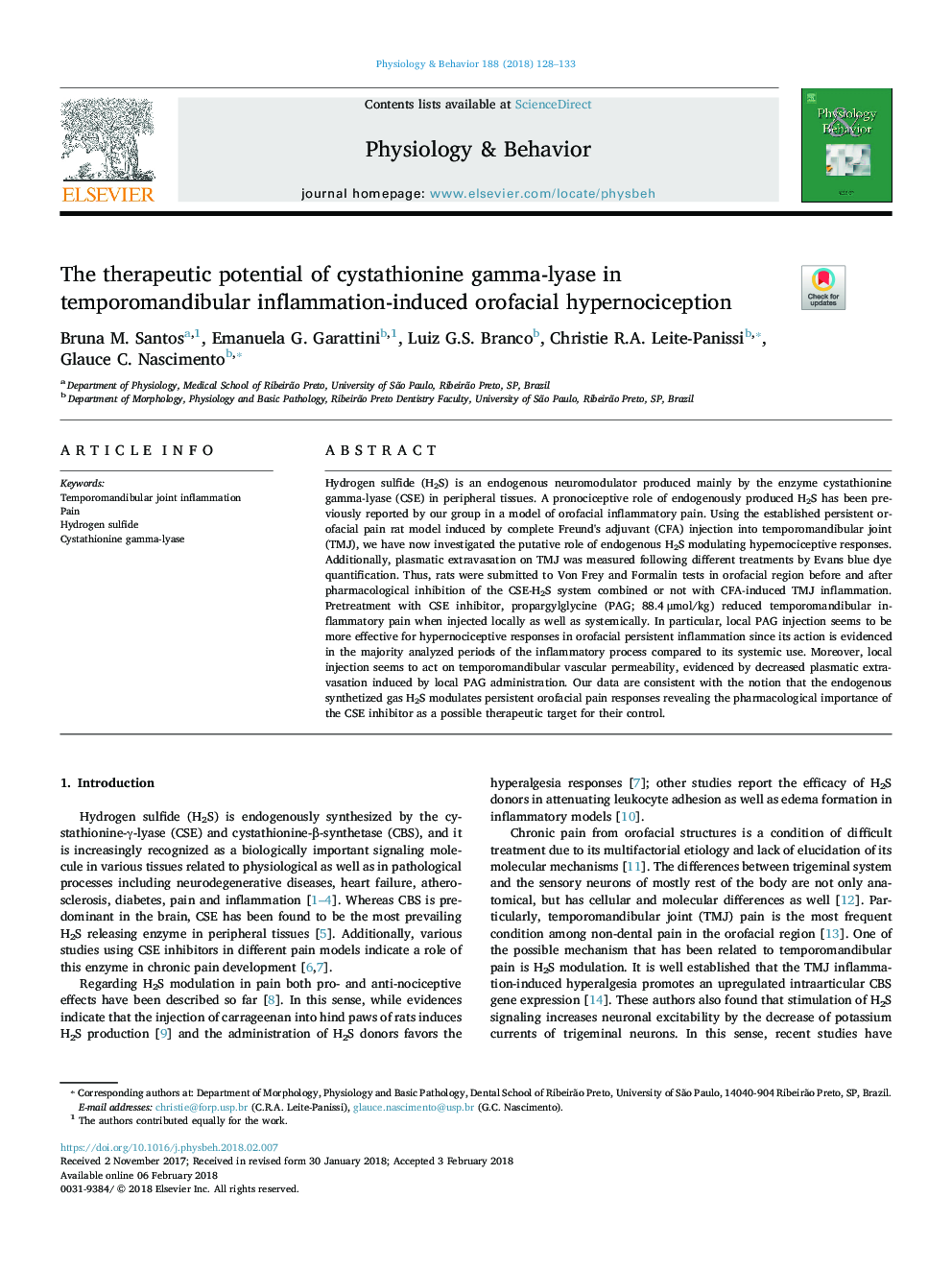| Article ID | Journal | Published Year | Pages | File Type |
|---|---|---|---|---|
| 8650577 | Physiology & Behavior | 2018 | 6 Pages |
Abstract
Hydrogen sulfide (H2S) is an endogenous neuromodulator produced mainly by the enzyme cystathionine gamma-lyase (CSE) in peripheral tissues. A pronociceptive role of endogenously produced H2S has been previously reported by our group in a model of orofacial inflammatory pain. Using the established persistent orofacial pain rat model induced by complete Freund's adjuvant (CFA) injection into temporomandibular joint (TMJ), we have now investigated the putative role of endogenous H2S modulating hypernociceptive responses. Additionally, plasmatic extravasation on TMJ was measured following different treatments by Evans blue dye quantification. Thus, rats were submitted to Von Frey and Formalin tests in orofacial region before and after pharmacological inhibition of the CSE-H2S system combined or not with CFA-induced TMJ inflammation. Pretreatment with CSE inhibitor, propargylglycine (PAG; 88.4â¯Î¼mol/kg) reduced temporomandibular inflammatory pain when injected locally as well as systemically. In particular, local PAG injection seems to be more effective for hypernociceptive responses in orofacial persistent inflammation since its action is evidenced in the majority analyzed periods of the inflammatory process compared to its systemic use. Moreover, local injection seems to act on temporomandibular vascular permeability, evidenced by decreased plasmatic extravasation induced by local PAG administration. Our data are consistent with the notion that the endogenous synthetized gas H2S modulates persistent orofacial pain responses revealing the pharmacological importance of the CSE inhibitor as a possible therapeutic target for their control.
Related Topics
Life Sciences
Biochemistry, Genetics and Molecular Biology
Physiology
Authors
Bruna M. Santos, Emanuela G. Garattini, Luiz G.S. Branco, Christie R.A. Leite-Panissi, Glauce C. Nascimento,
